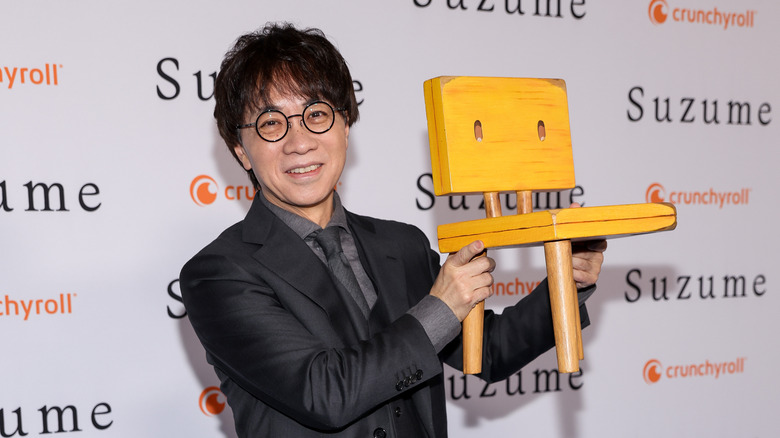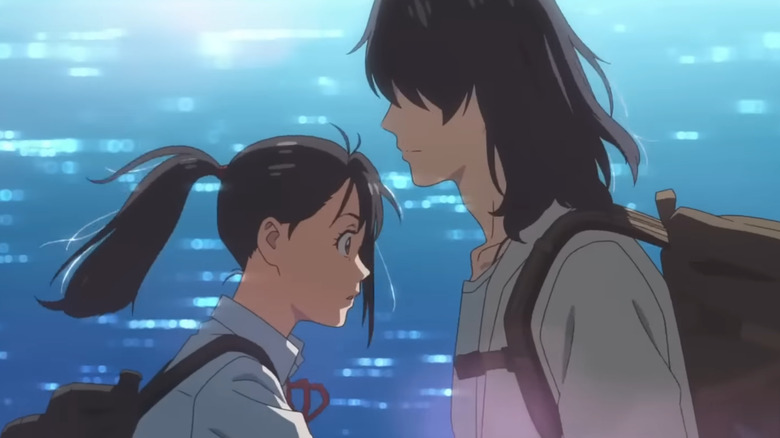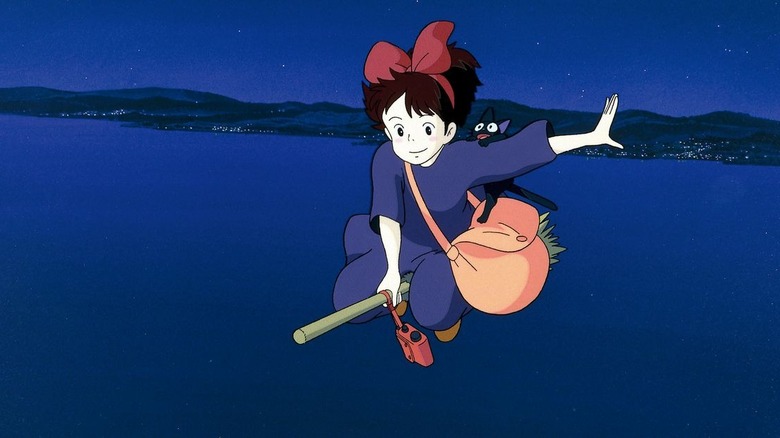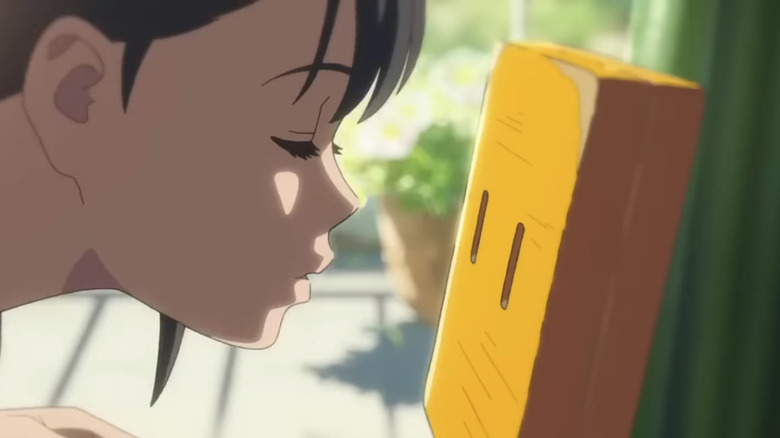Director Makoto Shinkai On The Anime Artistry Of Suzume - Exclusive Interview
Makoto Shinkai is an auteur who gets deeply involved with every frame of his films. He animated his breakout anime short, "Voices of a Distant Star," entirely by himself, and even as his productions have expanded in scope to become some of Japan's biggest blockbusters, he still personally pores over every little detail. His latest movie, "Suzume," opening in American theaters on April 14, is as gorgeous and emotionally powerful as anime fans have come to expect from Shinkai's work.
Speaking about "Suzume" to Looper, Shinkai seems willing to go into as much detail about the thought process behind his work as he puts into the work itself. Indeed, his answers were so long and detailed that we had time to ask him only three questions! We could have kept talking much longer, but in the time we had, Shinkai spoke about how he pushed the film's animation quality to new heights, the influence of Studio Ghibli, and how "Suzume" was almost a very different sort of romance.
How Suzume improves upon lighting in animation
You've developed one of the most recognizable styles in animation, and "Suzume" is very much in that style, but it's also doing some things differently than your previous movies. What was the biggest new challenge for you in making "Suzume"?
Thank you for bringing that up. We used 2D hand-drawn techniques for character[s] and backgrounds and complemented that with 3D forms of expression. So the method in which we animated a film hasn't changed [from] our past methods. In terms of what changed or improved or was challenging for this film, perhaps the biggest difference I can talk about is the amount of attention that I paid to the coloring or lighting of different scenes.
Normally, in an animation of this scale, once you have a character design, you would have a character model and character palette. The character would have three different palettes: morning, daytime, and night, perhaps. [In] every scene that's at night, the character would have that exact same color palette. But to me, that felt a little bit unnatural because when you're shooting in live action, shot by shot, you're actually getting slightly different nuances in terms of color. Skin tone could change slightly, just by some light reflection, or perhaps the position of the sun might change something very subtly, or how close you are to the subject.
Over the 2,000 cuts that are in "Suzume," I personally oversaw the tone or color palette of each shot, which is perhaps what you might be feeling in terms of it being within the same confines [as my previous work] but at the same time pushing the boundaries of visual expression.
How Studio Ghibli influenced Suzume
In some ways, the story feels closer in tone to the dream logic of Hayao Miyazaki's movies than to your past work. How much were you inspired by Miyazaki for this film?
The effect of Miyazaki and Studio Ghibli is not unique to this film. A large part of why I became an animation director is because of what Studio Ghibli has achieved over the years. Whether it's a conscious decision or a subconscious decision, there are certain effects that the studio had on my own works.
Specific to "Suzume," I've paid certain homages to Ghibli films. For example, when Suzume is traveling in the car, [you can hear the] "Kiki's Delivery Service" theme song, ["Rouge Message"]. That's the same theme song that Kiki listened to in the opening of "Kiki's Delivery Service."
In bringing these Easter eggs into the film, what I wanted to do was make Suzume's world almost [an] extension of our own reality, because we're dealing with a very heavy theme, the 2011 Great East Japan Earthquake, which happened in real life, but it also happened in Suzume's world. How do you bridge those two realities and bring them into the same context? I would argue most if not all of the Japanese population, and younger kids especially, saw Ghibli films. So they would've seen "Kiki's Delivery Service" in the same way that in the film Suzume [has] seen that movie. Saying that Ghibli exists inside the world of Suzume brings her world much closer to our own reality and makes that very relatable.
With regards to the fantasy components, I didn't set out to make a movie as an homage to the Ghibli films or [to pay] respects to Miyazaki himself, but rather, as I developed a story, it demanded certain fantasy elements. That is because, at its core, this film deals with the 2011 earthquake. And with that backdrop, a young girl is coming of age and has to overcome certain challenges and difficulties that she herself is bearing the burden [of] at a very young age.
This film wasn't intended to be a documentary or exposition. It was always intended to be placed into the context of entertainment. So when thinking about what the story required, naturally I leaned more towards the fantasy side — a moving chair, a talking cat, the worm. [There are] certain expressions that you would almost feel in everyday life, but adding a fantasy component to it is how I bridged that gap as well.
The chair romance was almost a lesbian one
I have read that you initially intended "Suzume" to be a story about two women but were told by the producers to change one of the romantic leads to a man. Will you still try to tell more direct LGBTQ+ stories in the future?
I'm very impressed that you know about that because I think I've only talked about that in interviews in Japan. At first, I wanted to turn this story into a movie about Suzume and another girl journeying. Why I even wanted to go in that direction in the first place is because I personally felt a little bit tired of telling the very traditional romance story. I felt that in "Your Name," I [did] everything that I possibly could in terms of "boy meets girl" and "will they, won't they, will they meet." That element of romance is very relatable to the masses, which is why it was a subject matter that resonated with a large audience.
Personally, because I've done that so many times, I pivoted. I wanted to pivot to a more sisterhood type of romantic story, but I had to change that because my producer said, "You may be tired of these romantic stories, but your audience loves it." So in order to not make it too much of a romance, I decided to make her primary interest a chair.
In terms of the LGBTQ commentary, it's not something that I'm actively trying to write or not write or [is] a conscious decision. But with this film, Suzume as the main character, it works. But I think it would also work had she been a boy or had she been non-binary. It's not necessarily the context of male/female; it's about a human overcoming something. In my future films as well, I want to focus on that human story as opposed to too much commentary on gender or sex.
This interview was conducted via a translator and has been edited for clarity.
"Suzume" opens in American theaters on April 14.



